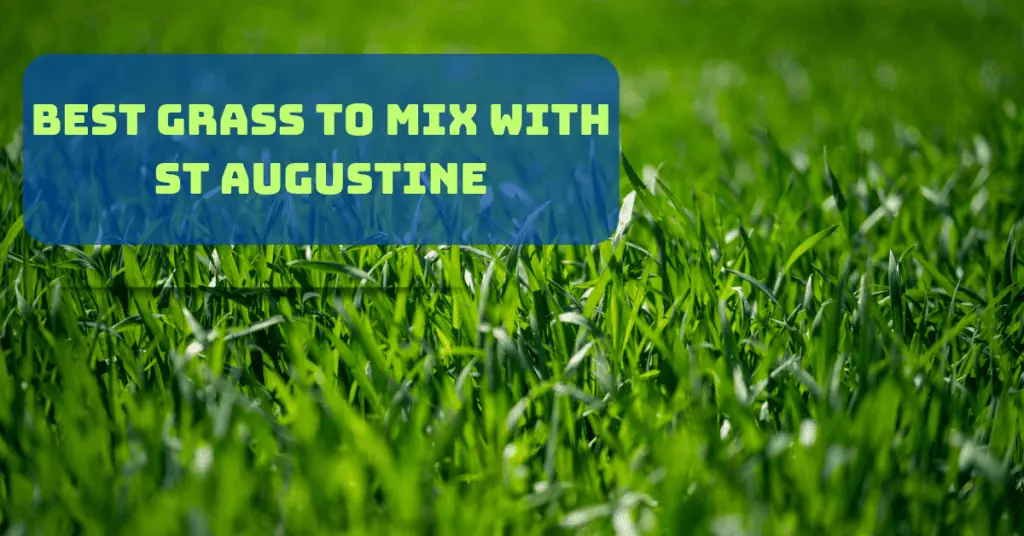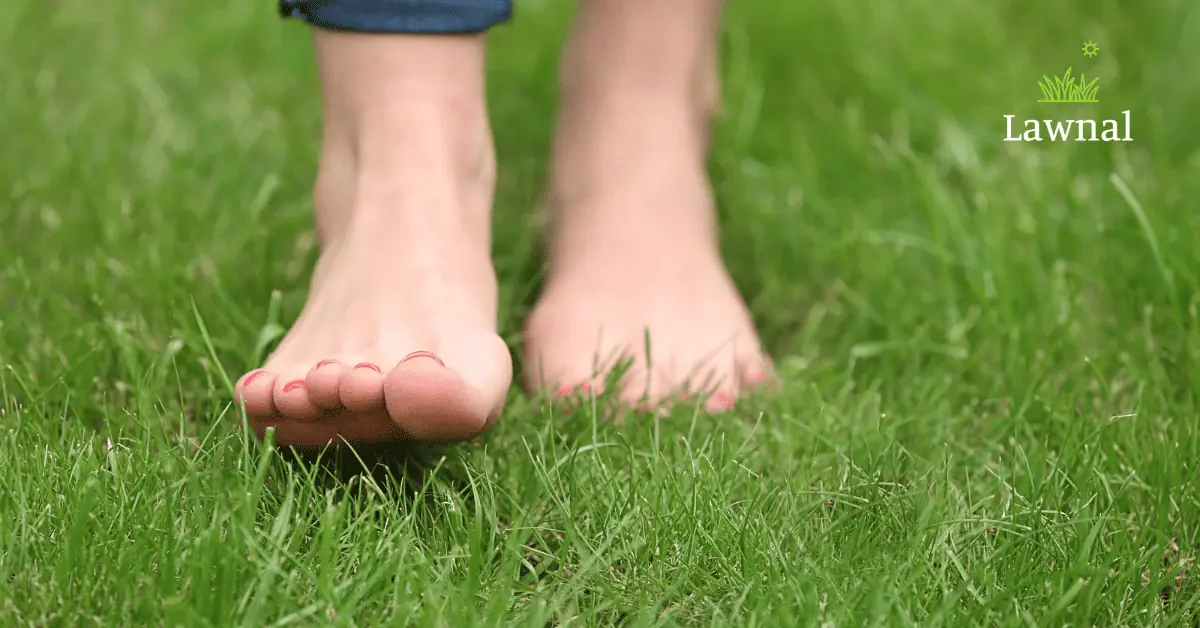If you’re looking to create a lush and resilient lawn, you may be considering mixing different types of grass with St. Augustine. At the same time, St. Augustine is a popular choice for its vibrant green color and ability to tolerate shade. It may be beneficial to mix St. Augustine grass with other types of grass to achieve a more resilient and diverse lawn.
Its combination with different grass varieties can provide many benefits, ranging from better drought tolerance to reduced maintenance requirements.
But with so many grass types, it can take time to determine the best fit for your lawn. Get ready to create a lawn that’s the envy of the neighborhood!
Understanding St. Augustine Grass
St. Augustine grass is an ideal warm-season grass that does exceptionally well in hot and humid climates. It is well-adapted to coastal regions and has excellent salt tolerance.
This grass is a popular lawn choice due to its beautiful appearance, dense growth, and ability to grow in partial shade. But, it is susceptible to certain diseases and may need more frequent mowing than other grass types.
Characteristics of St. Augustine Grass
Here are some of the characteristics and features that make St. Augustine grass a top choice for homeowners:
- Dense Growth: St. Augustine grass has a dense growth pattern that creates a thick, carpet-like appearance. This feature makes it an excellent choice for heavy foot traffic areas like play areas and outdoor entertaining spaces.
- Drought Resistance: While St. Augustine grass prefers moist soil, it has some drought resistance and can survive periods of low rainfall. But, it will still need regular watering to maintain its lush appearance.
- Heat Tolerance: St. Augustine grass can tolerate high temperatures and is highly suitable for warm, humid climates.
- Pest Resistance: St. Augustine grass is resistant to pests and diseases, making it a low-maintenance choice for homeowners.
- Shade Tolerance: St. Augustine grass can tolerate moderate shade. It is an ideal choice for yards with trees or other obstacles that may block out some sunlight.
- Soil Preference: St. Augustine grass prefers acidic soil with good drainage. It’s not well-suited to areas with heavy clay soil or poor drainage.
Best Grasses to Mix With St. Augustine
Mixing St. Augustine grass with other grass types can create a more resilient and diverse lawn. When selecting grass types to mix with St. Augustine, consider growth rate, texture, and color factors. Some grass types that can get mixed with St. Augustine include:
Bahia Grass
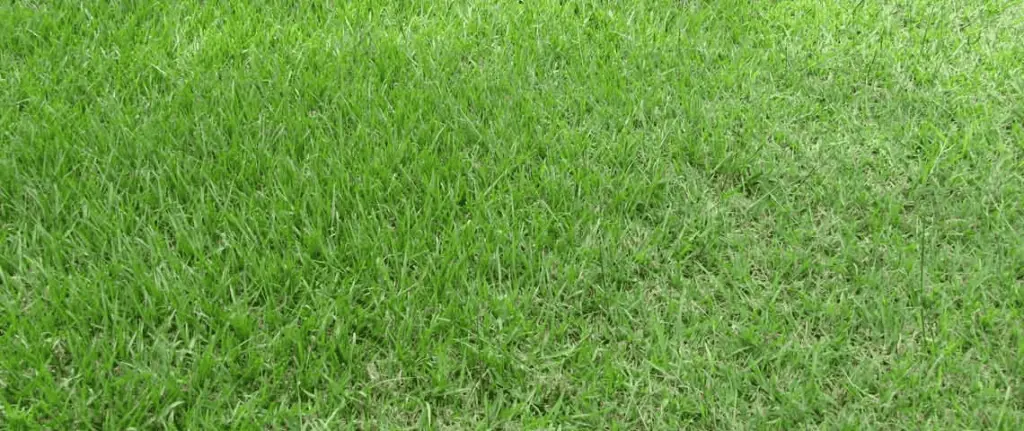
Bahia grass is a warm-season grass well-adapted to hot and humid climates. It has a coarse texture and a light green color, which can add texture and contrast to a lawn when mixed with St. Augustine.
Bermuda Grass
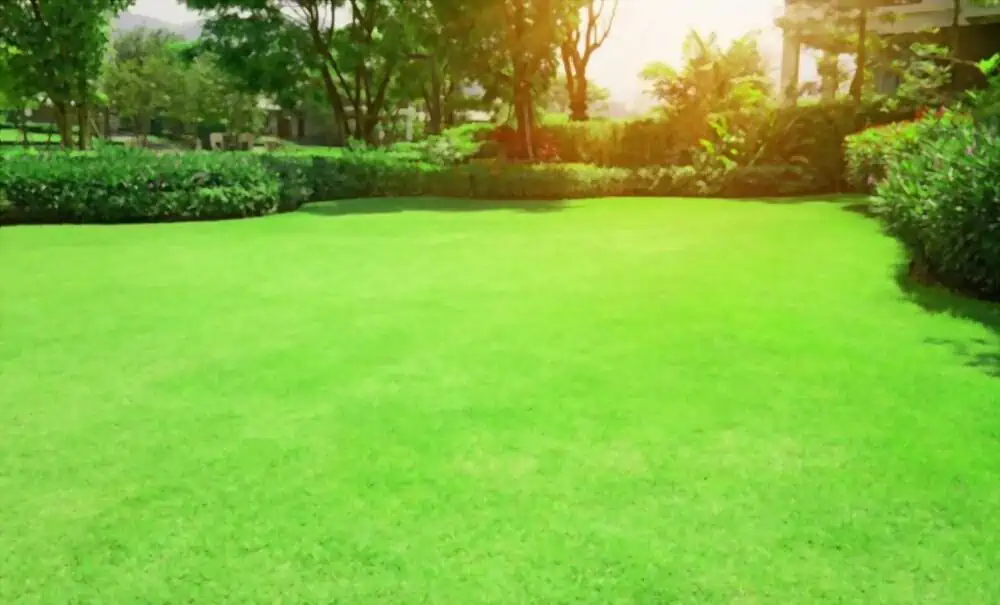
Bermuda grass is a warm-season grass well-suited for hot and dry conditions. It has a fine texture and a bright green color, which makes it an excellent complement to St. Augustine grass.
Centipede Grass
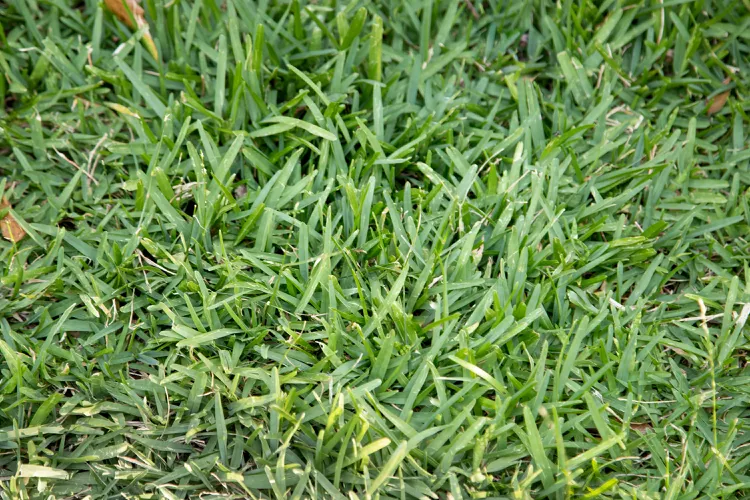
This grass is a warm-season grass that is well-suited for low-maintenance lawns. It has a light green color and a medium texture which can create a beautiful contrast when mixed with St. Augustine grass.
Zoysia Grass

This warm-season grass is peculiar for its excellent drought tolerance and low-maintenance requirements. It has a fine texture and a dark green color, which makes it an attractive option to mix with St. Augustine.
Of the grass types listed above, Bermuda grass and Zoysia grass get considered the best options to mix with St. Augustine. Both grass types have excellent drought tolerance and low-maintenance requirements. This feature makes them well-suited for a mixed lawn.
Bermuda grass has a perfect texture and a bright green color, which can add contrast and texture to a lawn when mixed with St. Augustine. Zoysia grass has a dark green color and fine texture. This mix can create a beautiful contrast and complement St. Augustine’s lush appearance.
Tips for Mixing Grass Types With St. Augustine
Preparing the soil well when mixing grass types with St. Augustine is crucial. And also to follow proper watering and fertilization guidelines. Here are some tips for mixing grass types with St. Augustine:
- Prepare the soil by taking out any debris and loosening the soil to a depth range between 6-8 inches.
- Include compost or other organic matter in the soil to enhance its structure and nutrient content.
- Plant the grass types in separate lawn areas to avoid competition and ensure that each grass type has enough space to grow.
- Water the lawn to encourage profound root growth and avoid overwatering.
- Fertilize the lawn according to the specific needs of each grass type and avoid over-fertilization.
Factors to Consider When Choosing Grass Types to Mix With St. Augustine Grass
Mixing St. Augustine grass with other grass types can help create a resilient, multi-textured lawn. But with so many grass types, it can be overwhelming to determine which is the best fit for your lawn. Here are some factors to note when you select your grass types to mix with St. Augustine:
Climate
The climate in your area significantly plays a role in determining which grass types will thrive alongside St. Augustine. Consider the average temperature, rainfall, and humidity levels to choose grasses well-suited to your area.
Compatibility
Some grass types may not be compatible with St. Augustine and could cause competition for nutrients or other issues. Contact a lawn care professional or research which grass types are compatible with St. Augustine.
Maintenance Requirements
Different grass types have varying maintenance requirements. When selecting grass types, consider mowing height, watering needs, and fertilization requirements.
Soil Type
The soil in your yard also significantly determines which grass types will grow best alongside St. Augustine. When selecting grass types, consider the soil’s pH level, texture, and drainage capacity.
Sunlight
Grasses need different amounts of sunlight to grow. So consider your yard’s direct sunlight and shade when selecting grass types.
Texture and Appearance
Grasses come in varying textures and shades of green. Consider the appearance and texture of the grass types you are considering and choose ones that complement St. Augustine’s appearance.
Importance of Choosing the Right Grass Type to Mix With St. Augustine
It may be beneficial to mix St. Augustine grass with other types of grass to achieve a more resilient and diverse lawn. When choosing the right grass type to mix with St. Augustine, you must consider climate, soil conditions, and maintenance requirements.
Climate Compatibility
Climate compatibility is among the most critical factors when mixing grass types with St. Augustine. Different grass types thrive in different climates and need different water levels and maintenance. For example, mixing St. Augustine with Bermuda grass may be beneficial if you live in a hot and dry climate.
This mix is peculiar for its drought tolerance and requires minimal maintenance. In contrast, mixing St. Augustine with Zoysia grass may be a better option if you live in a humid climate with moderate temperatures.
Maintenance Requirements
Maintenance requirements are another crucial factor when mixing grass types with St. Augustine. Different grass types have varying growth rates, textures, and colors, which can affect their maintenance needs.
For example, mixing St. Augustine with Zoysia grass may be a better option if you prefer a low-maintenance lawn, as Zoysia grass requires minimal watering and mowing.
In contrast, mixing St. Augustine with Bermuda grass may be a better option if you prefer a lush and green lawn and don’t mind frequent maintenance.
Soil Conditions
Soil conditions are also essential when choosing the right grass type to mix with St. Augustine. Different grass types have varying soil preferences and need specific nutrients to grow healthy and strong.
For example, mixing St. Augustine with Bahia grass may be beneficial if you have sandy soil with poor nutrient content. This mix is peculiar to its ability to grow in poor soil conditions. Or, if you have clay soil with high nutrient content, mixing St. Augustine with Centipede grass may be a better option.
Conclusion
Mixing grass types with St. Augustine can create a more diverse and resilient lawn. Choosing the right grass type to mix with St. Augustine can offer many benefits, including:
- A more resilient and diverse lawn that can tolerate different environmental conditions
- Reduced water and maintenance requirements, which can save time and money
- A more attractive lawn with contrasting textures and colors
- Improved soil quality and nutrient content
Bermuda grass and Zoysia grass are excellent options to mix with St. Augustine due to their low-maintenance requirements and attractive appearance. Following proper soil preparation, and watering, this mix results in a suitable lawn for your property.
